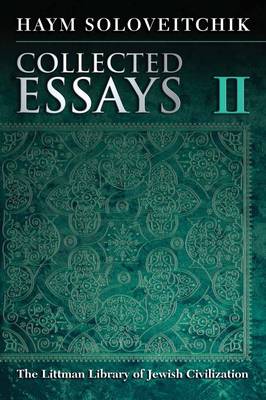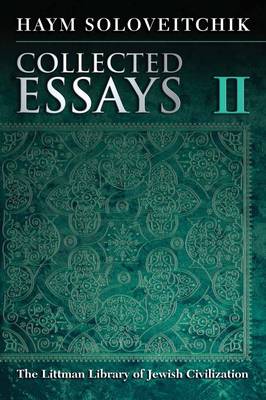
- Retrait gratuit dans votre magasin Club
- 7.000.000 titres dans notre catalogue
- Payer en toute sécurité
- Toujours un magasin près de chez vous
- Retrait gratuit dans votre magasin Club
- 7.000.0000 titres dans notre catalogue
- Payer en toute sécurité
- Toujours un magasin près de chez vous
Description
In this second volume of his essays on the history of halakhah, Haym Soloveitchik grapples with much-disputed topics in medieval Jewish history and takes issue with a number of reigning views. His insistence that proper understanding requires substantive, in-depth analysis of the sources leads him to a searching analysis of oft-cited halakhic texts of Ashkenaz, frequently with conclusions that differ from the current consensus. Medieval Jewish historians cannot, he argues, avoid engaging in detailed textual criticism, and texts must always be interpreted in the context of the legal culture of their time. Historians who shirk these tasks risk reinforcing a version that supports their own preconceptions, and retrojecting later notions on to an earlier age. These basic methodological points underlie every topic discussed.
In Part I, devoted to the cultural origins of Ashkenaz and its lasting impact, Professor Soloveitchik questions the scholarly consensus that the roots of Ashkenaz lie deep in Palestinian soil. He challenges the widespread notion that it was immemorial custom (minhag kadmon) that primarily governed Early Ashkenaz, the culture that emerged in the Rhineland in the late tenth century and which was ended by the ravages of the First Crusade (1096). He similarly rejects the theory that it was only towards the middle of the eleventh century that the Babylonian Talmud came to be regarded as fully authoritative. On the basis of an in-depth analysis of the literature of the time, he shows that the scholars of Early Ashkenaz displayed an astonishing command of the complex corpus of the Babylonian Talmud and viewed it at all times as the touchstone of the permissible and the forbidden. The section concludes with his own radical proposal as to the source of Ashkenazi culture and the stamp it left upon the Jews of northern Europe for close to a millennium.
The second part of the volume treats the issue of martyrdom as perceived and practised by Jews under Islam and Christianity. In one of the longer essays, Soloveitchik claims that Maimonides' problematic Iggeret ha-Shemad is a work of rhetoric, not halakhah--a conclusion that has generated much criticism from other scholars, to whom he replies one by one. This is followed by a comprehensive study of kiddush ha-shem in Ashkenaz, which draws him into an analysis of whether aggadic sources were used by the Tosafists in halakhic arguments, as some historians claim; whether there was any halakhic validation of the widespread phenomenon of voluntary martyrdom; and, indeed, whether halakhic considerations played any part in such tragic life-and-death issues. The book concludes with two essays on Mishneh torah which argue that that famed code must also be viewed as a work of art which sustains, as masterpieces do, multiple conflicting interpretations.
Volume I available: https: //liverpooluniversitypress.co.uk/doi/book/10.3828/9781904113973
Volume III available: https: //liverpooluniversitypress.co.uk/doi/book/10.3828/9781904113997
Spécifications
Parties prenantes
- Auteur(s) :
- Editeur:
Contenu
- Nombre de pages :
- 448
- Langue:
- Anglais
- Collection :
Caractéristiques
- EAN:
- 9781904113980
- Date de parution :
- 07-11-14
- Format:
- Livre relié
- Format numérique:
- Genaaid
- Dimensions :
- 147 mm x 231 mm
- Poids :
- 816 g

Les avis
Nous publions uniquement les avis qui respectent les conditions requises. Consultez nos conditions pour les avis.






